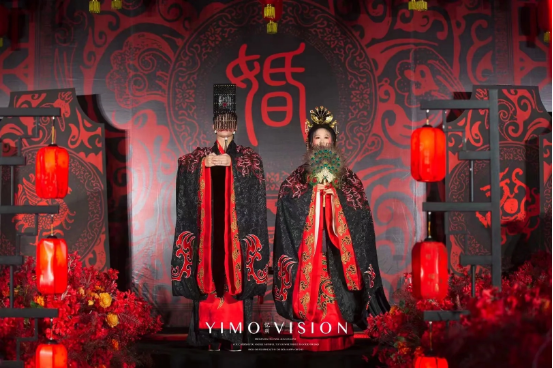The traditional Chinese culture is broad and profound, with a long history, giving birth to various forms of culture. Among them, as a typical traditional clothing, Hanfu has not only been inherited in the material aspect, but also plays an important role in the interpretation of cultural images.
The reason why Hanfu can be passed down to this day, mainly lies in its complete system of crowns and robes, while also possessing a unique style of the Han nationality. Of course, the aesthetic value and artistic philosophy of Hanfu are also important reasons for its widespread popularity. So, what exactly is the structure of Hanfu? And what components make it so beloved by people?

The Structure of Hanfu
First of all, Hanfu is divided into the following structures: collar, lapel, ren (the part where the lapel overlaps), ju (the hem of the clothes), qu (the cuffs), edge, etc. In terms of clothing system, it is divided into upper garment, lower garment, accessories, headwear, patterns and colors, etc. The forms of upper garments are diverse, mainly composed of pao, shirt and ao.

Pao
Pao is unique. Due to different tailoring techniques, it has a variety of shapes. Quju, daopao, etc., are typical shapes. Pao gives people a feeling of simplicity, smoothness and elegant aesthetic feeling of floating. It shows elegant temperament in every move.

Shirt
Shirts are mainly used as linings and inner layers. They can often be seen in daily wear. They feel comfortable and appropriate, and are extremely close-fitting. They are an indispensable part of wearing Hanfu. Ao can often be seen in cold seasons. Ao has various forms, meeting people’s aesthetic experience in different seasons.

Lower Garment
The lower garment is mainly skirts and trousers. There are Ruqun, Baidiequn, Shangqun, etc. There are also many types of trousers, mainly including KUQUN, Songku, Luoku, etc. The lower garment and the upper garment are matched to form the general appearance of Hanfu, which usually pays attention to coordination and integration with the scene. There are many accessories, such as jewels and chains. There are also countless headdresses, hairpins, crowns and scarves. Patterns and colors can better reflect the aesthetic order in traditional Hanfu. The sun, moon, heaven and earth, flowers, birds, animals, etc., can all be included in Hanfu. The aesthetic culture of thousands of years is vividly displayed on Hanfu, which can be called the Chinese color spectrum worn on the body.
The Styles of Hanfu
After talking about the basic structure of Hanfu, let’s talk about the basic styles of Hanfu. Up to now, Hanfu mainly has four styles.

First, the Yichang system: the Yichang system is the oldest and most basic shape in the Hanfu system, consisting of an upper garment and a lower garment. The upper garment has a cross collar and a straight collar, and the lower garment is matched with a skirt or trousers. The accessories and patterns of the Yichang system are extremely exquisite, requiring simplicity without losing elegance.

Second, the Shenyi system: the Shenyi system is an evolution of the Yichang system. Its design feature is to connect the upper garment and the lower garment at the waist to form a whole. The tailoring of the Shenyi is more complex, and the sleeves are also different from other Hanfu, usually mainly wide.

Third, the Paofu system: the Paofu system is characterized by using a piece of cloth to cut the upper and lower clothes, with no connection in the middle. There are many types of Paofu, mainly including Yuanlingpao, Zhishenpao, Daopao, etc. Paofu was a common clothing system in the Song and Ming Dynasties.

Fourth, the Ruqun system: the Ruqun is a common clothing style for women, consisting of an upper Ru and a lower skirt. The upper Ru is short, and its length is different in different dynasties. The lower skirt also has different cotton skirts and trailing long skirts. A typical one is the Qixiong Ruqun in the Tang Dynasty, which can greatly show the curvy beauty of women.
The costumes of the thousand-year-old Huaxia are not only reflected in each piece of clothing, but they are also the inheritance body of Chinese etiquette and culture. Every structure of Hanfu can be said to carry the deep heritage of culture. The beauty of Hanfu is reflected in these little by little and meticulous details.







